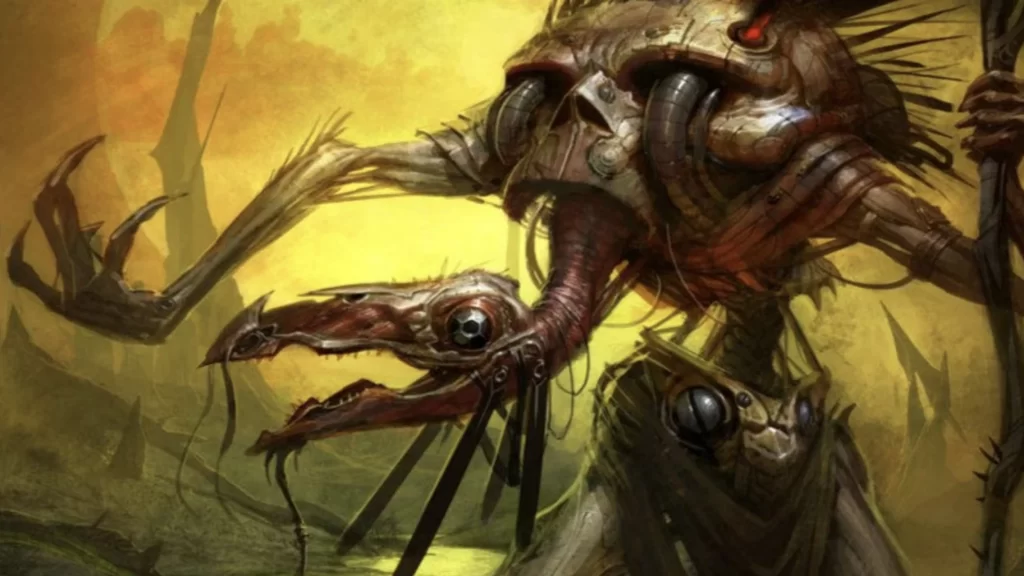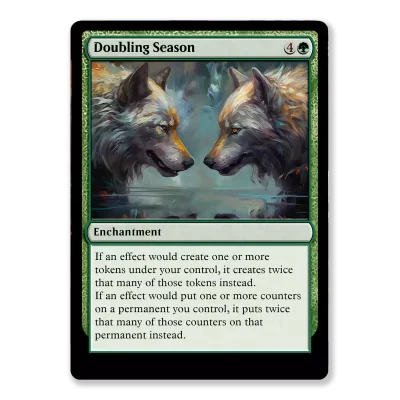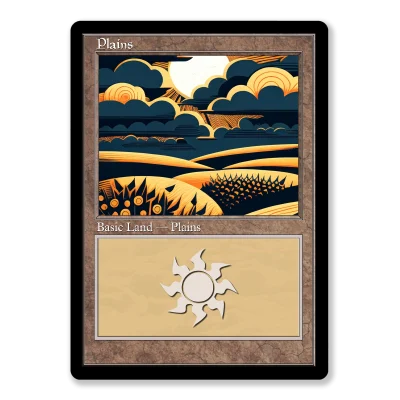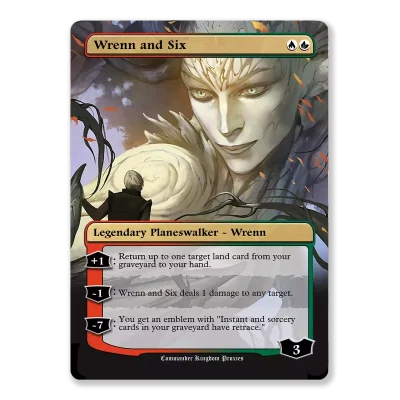In Magic: the Gathering, poison counters present a unique way to achieve victory. Unlike dealing damage to reduce an opponent’s life total, poison counters accumulate on a player and can lead to a loss if ten or more are gathered. This alternate win condition adds a layer of strategy, requiring players to balance offensive and defensive tactics in new and challenging ways. Poison counters are a distinct aspect of MTG’s gameplay, offering players an alternative path to victory and requiring a different approach to deck building and in-game tactics.
How many poison counters do you need to win in MTG?
In Magic: The Gathering, the alternate win condition involving poison counters requires that you put ten poison counters on an opponent. Once an opponent accumulates ten poison counters, they automatically lose the game.
The Mechanics of Poison Counters in MTG
The mechanics of poison counters in Magic: The Gathering are centered around an alternate win condition that differs from the traditional method of reducing an opponent’s total life to zero. Here’s an overview of how they work:
- Application of Poison Counters: Poison counters are typically given to a player when a creature deals them damage with the infect ability. Unlike regular damage that reduces a player’s life total, infect damage is translated into poison counters, with each point of damage resulting in one poison counter. For example, if a creature deals three damage to a player, that player receives three poison counters.
- Win Condition with Poison Counters: The primary significance of poison counters is their role in an alternate win condition. Players who accumulate ten or more poison counters lose the game. This rule creates a parallel path to victory, where players can focus on infect strategies to win the game without dealing regular damage to reduce the opponent’s life total.
- Rules and Interactions Involving Poison Counters: Several key rules govern the interactions involving poison counters:
Doubling Effects: Certain cards can double the number of counters given to a player, including poison counters.
Proliferation: The proliferate mechanic allows players to increase the number of various types of counters, including poison counters, on players and permanents.
Prevention and Removal: Limited ways to prevent or remove poison counters exist. Some cards can prevent counters of poison from being added, while others, like “Leeches,” can remove poison counters. However, eliminating poison counters is rare in the game. - Combat Damage: When dealing with poison counters, it’s important to note that for older poison cards, normal combat damage is dealt first, and then a trigger adds the poison counters. However, for newer cards with the infect mechanic, the damage itself is replaced by poison counters (or -1/-1 counters on creatures).

Strategies for Using Poison in Magic
Strategies involving poison counters in Magic: The Gathering (MTG) can be potent, revolving around infecting opponents with poison counters to achieve an alternative win condition. Here’s an overview of strategies for using, capitalizing on, and defending against poison counters:
Offensive Strategies with Poison Counters
- Using Infect Creatures: Infect creatures are pivotal in strategies involving poison counters. These creatures deal damage in the form of poison counters instead of regular damage. A popular approach is to use creatures with infect to accumulate poison counters on the opponent quickly. For instance, cards like “Glistener Elf” effectively deal poison damage rapidly.
- Buffing Infect Creatures: Enhancing the power of infect creatures can speed up the process of infecting an opponent. This can be achieved using cards like “Giant Growth,” which temporarily increases a creature’s power, potentially leading to a swift accumulation of poison counters on the opponent.
- Proliferating Poison Counters: The proliferate mechanic allows you to add additional poison counters to players who already have them. This tactic can quickly escalate the number of poison counters on an opponent, pushing them closer to the critical count of ten.
Defensive Strategies Against Poison Counters
- Preventing Poison Counters: Some cards can prevent the addition of poison counters. “Melira, Sylvok Outcast” is notable for its ability to stop poison counters from being added to you, though it doesn’t remove existing ones.
- Limiting Poison Counter Accumulation: “Melira, the Living Cure” limits the number of poison counters you can receive in a turn to just one, regardless of how many you would normally get, thereby slowing down the infect strategy significantly.
- Removing Poison Counters: Removing poison counters is challenging in MTG. The card “Leeches” from the Homelands set is unique in its ability to remove all poison counters from a player.
Popular Cards and Combos
- Commander Decks: Certain commanders are well-suited for infect strategies in the Commander format. For instance, “Atraxa, Praetors’ Voice” offers free proliferation each turn, which synergizes well with infect strategies. “Skithiryx, the Blight Dragon, ” another strong option, is an infect creature capable of dealing substantial poison damage.
- Combining Abilities: Combining the infect mechanic with other abilities or buffs can create potent combinations. For instance, using creature buffs in conjunction with infect creatures or leveraging proliferate mechanics to increase the number of counters can be very effective.
Poison Counters vs. Similar Mechanics in MTG
The mechanics of poison counters, infect, and toxic in Magic: The Gathering each offer unique strategies and implications for gameplay.
1. Poison Counters:
- Basic Concept: Players lose the game if they accumulate ten or more poison counters.
- Application: Primarily through the infect mechanic and certain specific cards.
2. Infect:
- Functionality: Creatures with infect deal damage to players in the form of poison counters and creatures as -1/-1 counters. This impacts the creature’s survival ability and the opponent’s life status through poison counters.
- Game Implications: Infect is notable for its ability to impact creatures and players, making it a versatile tool in offensive and defensive strategies.
3. Toxic:
- Mechanism: Creatures with toxic deal combat damage as usual but also apply poison counters equal to their toxic value.
- Gameplay: Toxic creatures simultaneously deal regular combat damage and poison counters, which differs from infect’s replacement of regular damage with poison counters.
- Comparison: Unlike infect, toxic does not affect creatures with -1/-1 counters but focuses on distributing a set number of poison counters based on the toxic value.
Deck Building with Poison Counters
When building a deck around poison counters, particularly with infect or toxic strategies, certain cards can significantly enhance the effectiveness of this approach:
1. Infect-based Decks:
- Key Cards: Creatures like “Glistener Elf” and “Blightsteel Colossus” are pivotal. They bring the infect ability into play, dealing damage directly as poison counters.
- Supporting Cards: Cards that increase creature power or provide proliferate abilities, like “Vorinclex, Monstrous Raider,” help accelerate the accumulation of poison counters.
2. Toxic-based Decks:
- Important Creatures: Cards with a high toxic value, such as “Tyrranax Rex,” can be central to a toxic strategy. They ensure that every successful attack adds numerous poison counters to the opponent.
- Strategic Cards: Any cards that facilitate combat damage or protect your creatures can be valuable in ensuring that toxic creatures can deal their damage effectively.
History of Poison Counters in Magic
Initially, a rare and somewhat niche mechanic, poison counters gained prominence with the advent of the infect mechanic in the “Scars of Mirrodin” block. This marked a pivotal moment, as poison counters became central to specific gameplay strategies. Over the years, MTG has sporadically reintroduced poison counters through various cards and mechanics, ensuring their continued presence.
The introduction of poison counters as an alternate win condition fundamentally changed gameplay, encouraging players to adopt new strategies and deck-building approaches. This shift led to the creation of decks specifically tailored around infect and poison counters and influenced the overall metagame. Players had to consider and prepare for poison-based strategies in competitive play, affecting sideboard decisions and overarching game tactics.
Removing Poison Counters
The options for removing poison counters in Magic: The Gathering are minimal. This scarcity of removal methods adds a strategic challenge, making accumulating poison counters a substantial threat in gameplay. The card “Leeches” from the Homelands set stands out among the few options. It is the only card in the game’s history that can remove poison counters from a player. Although “Leeches” is a rare and specific countermeasure, its existence is critical in games where poison counters pose a significant threat.
Final Thoughts
Poison counters add complexity and strategic depth to Magic: The Gathering, offering players an alternative route to victory beyond the traditional reduction of life totals. Their presence encourages diverse gameplay styles and enriches deck-building strategies, contributing significantly to the game’s depth.
While not always a central element in MTG’s metagame, poison counters have consistently influenced player strategies and deck designs, maintaining their relevance. As MTG continues to evolve, the role of poison counters remains crucial, challenging players to think creatively and adapt their strategies to either leverage or counter this potent mechanic.





